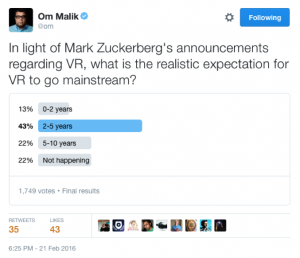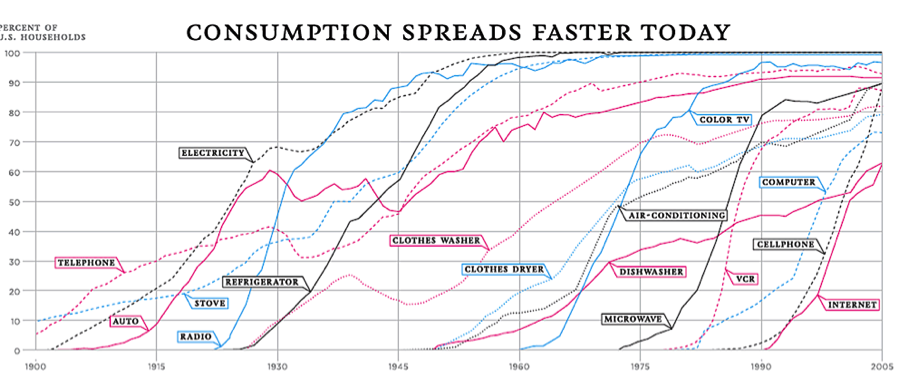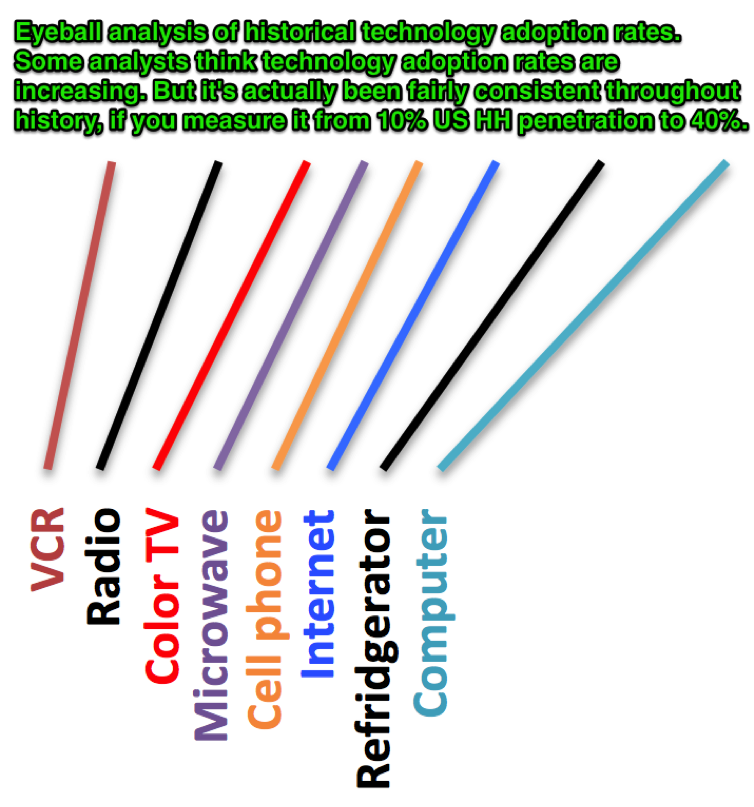SVG Digital Perspective: Hype VR, But Remember Innovation Is a Marathon, Not a Sprint
Mainstream VR experience may still be years off
Story Highlights
By Brian Ring, Contributing Editor
“Today, virtual reality is poised to change the way we interact with and control computers. Will there be VR in every house, classroom, and office? Will immersing oneself in a computer-generated world be as commonplace as watching a movie?” [i]

#TBT: The 1993 Sega VR headset.
Perhaps. But this quote was published in 1995 in an article on the computer-science Website of the University of Illinois.
Since then, I’ve been impressed with the steady march of this important technology. I’ve experienced a couple of solid demos. I can imagine a fantastic videogame experience. And I’ve been dying to create a pay-TV EPG in virtual reality so that I can walk into the very first “TV-channel–surfing retail experience.” (We’d get an old-school Barnes & Noble merchandiser to lay out the store. I can see the sports section beckoning me now with signs that say, “Sit down in our La-Z-Boy and channel-surf the most exciting games right now, all from your virtual floor seat!”)
Still, I’m not convinced this is a mainstream entertainment product. And I certainly don’t agree with the way-smarter-than-me Mark Zuckerberg that it’s “the next big thing” after mobile.
Read his quote to Wall Street on the Oculus VR acquisition below. You might be surprised by the way he positions it: “We have a lot more to do on mobile, but, at this point, we feel we’re in a position where we can start focusing on what platforms will come next to enable even more useful, entertaining, and personal experiences.”
I’m reading too far into it, but, to me, it sounds like, “Hey, folks, this is what comes next for Facebook after mobile.” Or “VR will be more useful, entertaining, and personal than mobile.” Really?
Don’t get me wrong. Oculus is still a brilliant investment, and I’m still a Zuckerberg fanboy. If it makes a dent in the videogame biz, it’s worth $2 billion. And, in any event, that’s nothing to Facebook.
But, with each new VR headline, it gets harder for me to suppress one nagging thought: VR may be poised for one very large hype cycle.
So, is it? I spent hours surfing the Web on this. Here’s what I found.
 First, I found a Twitter poll by Om Malik, in which 1,749 of his smart followers voted. The results? 13% seem to be all-in on this. They think VR will go mainstream in 0-2 years.
First, I found a Twitter poll by Om Malik, in which 1,749 of his smart followers voted. The results? 13% seem to be all-in on this. They think VR will go mainstream in 0-2 years.
The largest percentage, 43%, think it’ll happen in 2-5 years.
Another 22% hedged, voting for 5-10 years. And another 22% felt that it’s never going to be mainstream.
What about historical technology-adoption rates? There’s plenty of evidence that technology is advancing at an accelerating pace. However, I’m not sure how neatly that translates to consumer adoption.
What does history say about how long consumer technologies typically take to go mainstream?
If you research the topic, one ubiquitous image compares the adoption of various technologies over the past century. I’ve pasted it below. You can find the chart embedded in Professor Rita McGrath’s article titled The Pace of Technology Adoption is Speeding Up and published in the Nov. 25, 2013, Harvard Business Review.

I don’t have great eyesight, but that headline didn’t resonate with my look at that chart. So I went ahead and eyeballed some of those curves from the 10% U.S. household penetration point until the 40% penetration mark. My “overlay” bars from that exercise are pasted below.

Most of these technologies took between three and 10 years to get from 10% to 40% penetration.[i] It has been remarkably consistent from the early part of the 20th century into the 21st.[ii]
What happens to VR if we use the adoption rate of color TV? It took about five years to get from 10% to 40%. VR is not at 10% yet, but, if it were to hit that this year, maybe we would hit 40% by 2021.
That doesn’t mean today’s VR hype is bad. Advocating for complete realism isn’t nearly as fun as dreaming about my personalized VR sports-highlights show — from my floor seat at every arena in the country!
Like the business cycle, the hype cycle plays an important role in the way we achieve forward progress. One must drink the Kool-Aid to bring about breakthrough change. But innovation is a marathon, and it’s worthwhile to take a historical perspective on new technology in order to gain insight into how much cash is worth burning and how quickly.
Many of the best innovators today have answered that question expertly. Think about Netflix, Amazon, BAM Tech, Hulu: every one of these companies had a long-term perspective on its innovation, the guts and patience to slog it out, and the discipline to not set expectations too high.
